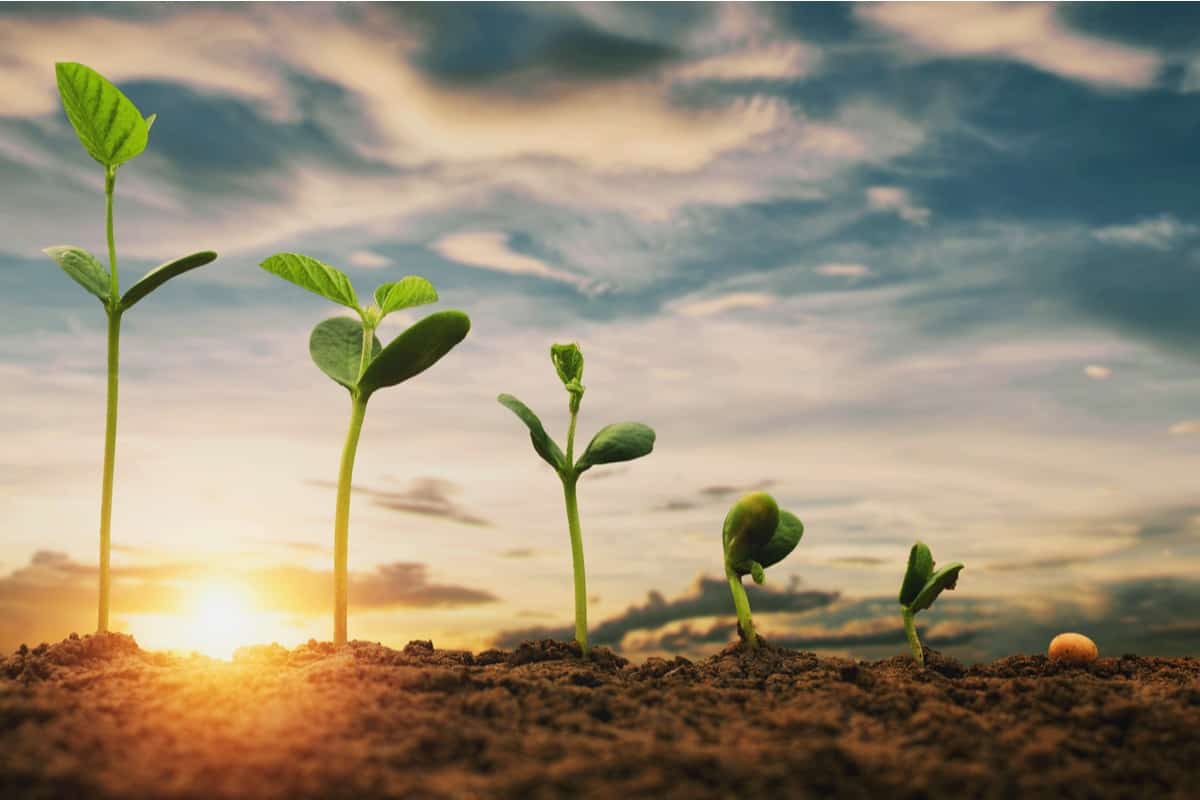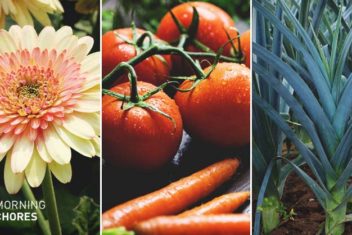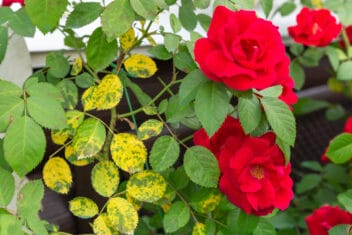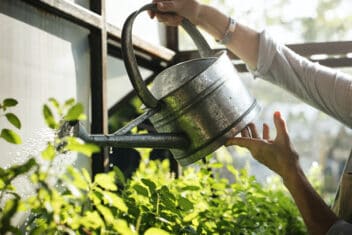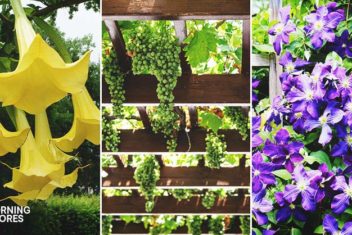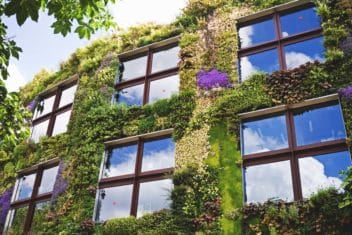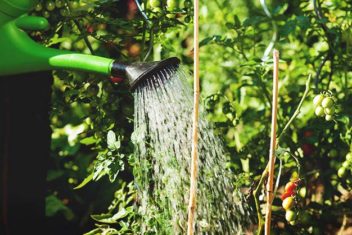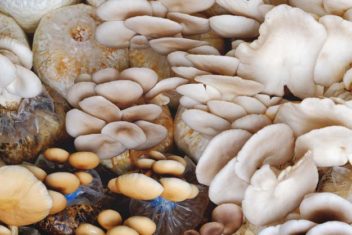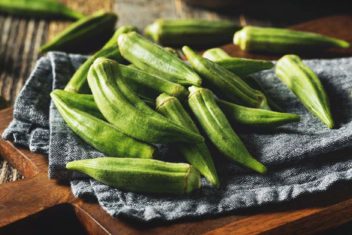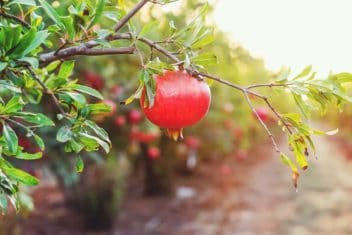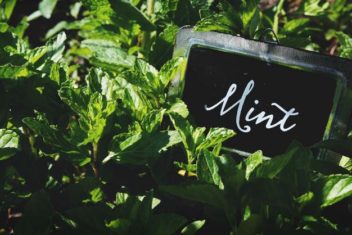When we think about growing plants, we often focus on things that aren’t really in our control.
From early frosts to late harvests, there are all sorts of situations that we can’t change.
However, when it comes to light and plant growth, understanding the intricacies here can play a major role in how well our plants mature.
If you want to learn more about light and plant growth to help you produce healthier, more vigorous plants, you’ve come to the right place. This post will tell you everything you need to know!
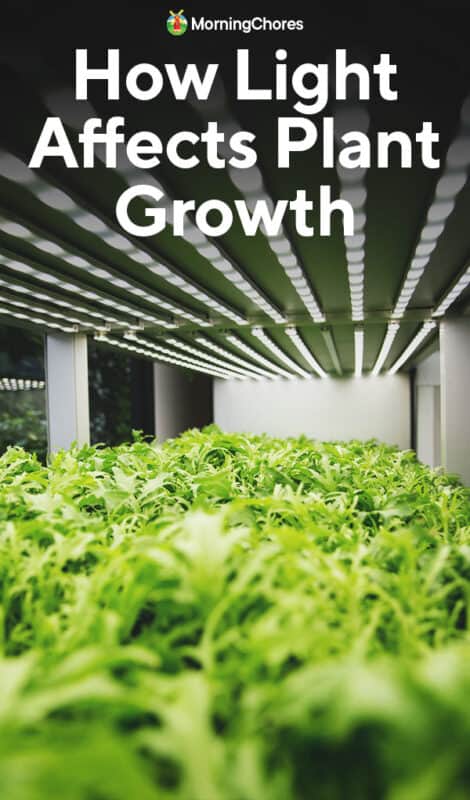
Light is something we all take for granted – unless you live in Alaska and have limited amounts of light, that is. We just assume that plants can naturally harness and take whatever they need from the sun.
However, when it comes down to it, light isn’t always a given. Nothing can grow in complete darkness (except fungi like mushrooms, of course).
1. Photosynthesis
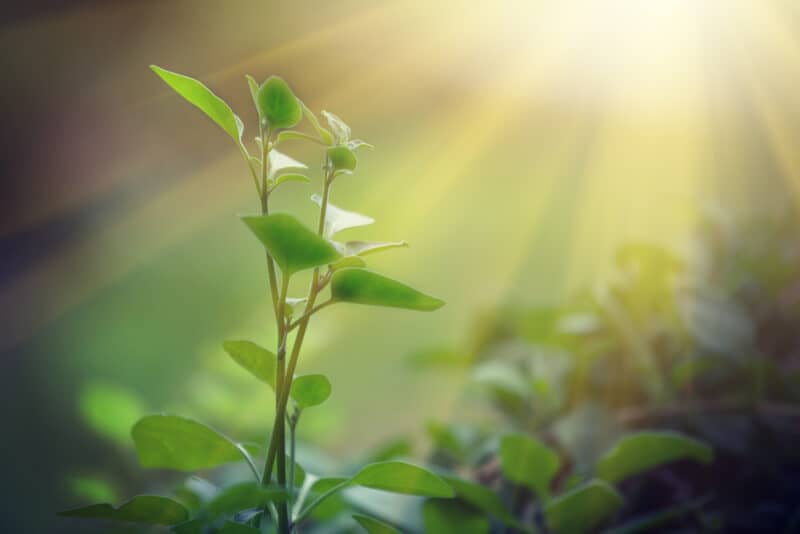
Anything that has chlorophyll needs light, and understanding each plant’s unique light requirements is important to help them grow.
Plants need light to conduct photosynthesis. Chances are, you remember this from your high school science classes.
However, you might not remember too much about the concept.
Plants are autotrophic creatures, meaning they can create all the nutrition they need within their cells. However, they need nutrients and minerals from the soil, water, and carbon dioxide to do it.
To combine all these vital pieces and make their food, plants also need energy. This is derived from the sunlight – using the chlorophyll within their leaves. Both water and carbon dioxide, in the presence of sunlight, combine to produce oxygen and glucose molecules.
If plants don’t have enough of any of these variables, their growth will be stunted.
2. Growth Direction
A plant is pretty much entirely dependent on a light source. For outdoor plants, that source is the sun. When the first leaves are produced on a plant, it will try to grow toward the light source to make sure it can get as much light as it can for photosynthesis.
Plant growth is often affected (sometimes positively, and sometimes negatively) by the location of the plant. Some plants follow the sun as it traverses the sky, while others respond to the light by growing in the direction of the light source. Sometimes, this can cause a plant to become leggy and spindly.
Of course, this natural behavior has implications for people who choose to garden using grow lights, too.
3. Seasonal Impacts of Light
As you already are aware, sunlight is not something that is consistent year-round. Both the intensity and duration of the sunlight can fluctuate with changing seasons.
Plants adapt to those changing seasons by focusing most of their growth on the brighter periods of the month. That’s why most produce fruit and flowers in the spring and summer months and go dormant in the winter.
What to Keep In Mind
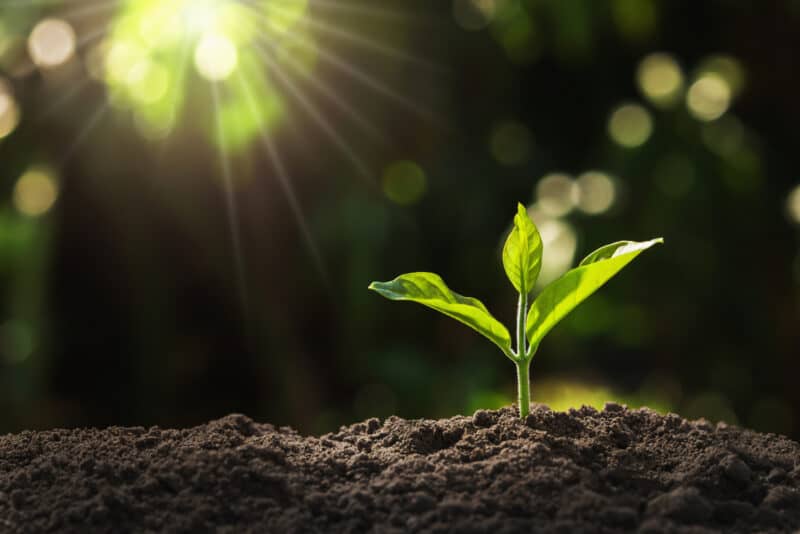
Now that you know how light impacts plant growth, here are some variables within the larger category of “light” to consider so that you can optimize your plant growth.
1. Intensity
The intensity of light is an important factor to consider when it comes to plant growth and lighting.
Outdoors, you may not have a lot of control over light intensity, short of planting your plants in the spring and summer only (when light is more intense), that is.
However, if you choose to use grow lights indoors, you can adjust how intense the light is by changing the distance between the lights and your plants. You can also use higher-powered bulbs.
That said, you do need to be careful about too much heat. The closer to the plants the bulbs are, the hotter the plants will be. Tread carefully!
2. Spectrum
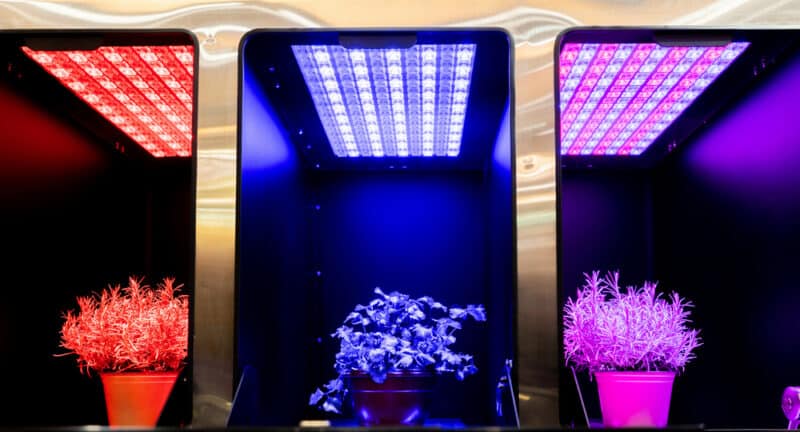
Light is a form of energy that exists and is moved as an electromagnetic wave. The visible light we see is made out of electromagnetic radiation in a range of wavelengths.
Visible light is between 390-700 nanometers, with light in different wavelengths appearing as a certain color. Red has the longest wavelength and the least amount of energy, while blue and violet lights have more energy and shorter wavelengths.
Plants need a variety of wavelengths on the spectrum to grow well, but the two that have the most impact on a plant’s health are red and blue lights.
Blue light has high energy and affects leaf growth, impacting chlorophyll production. If your plants don’t get enough blue light, you might notice yellow streaking in the leaves.
Red light impacts flowering and blooming. If your plants don’t get enough red light, they won’t bloom or produce fruit as well.
While most artificial grow lights produce light at each end of the spectrum, they don’t quite imitate what your plants can get outdoors 100%. You may still find that your plants don’t get all that they need.
3. Exposure
Light exposure impacts plants, too.
This is especially important when you are planning out the location of your garden or where you will place your plants indoors.
Window direction affects the intensity of natural sunlight, with southern exposures having the most intense light and northern having the least. Northern exposed areas also tend to be cooler.
These aren’t the only factors that can affect exposure, though. You’ll also have to consider the season, shade from other buildings, trees outside the window, curtains, and other features that might affect the intensity and exposure of your light source.
4. Day Length
Some plants only produce flowers when they get enough daylight hours. Short-day plants like poinsettias and Christmas cactus only flower when the days are shorter than 11 hours of light. Others are long-day plants that flower only when the day is longer than 11 hours. Others aren’t sensitive to day length at all.
Often, you can increase the time that plants are exposed to light to compensate for lower-intensity light (as long as the plant isn’t sensitive to day length with its flowering cycle, as mentioned above).
That said, some plants should not be exposed to light for more than 16 hours per day as they do need periods of darkness to survive. Too much direct light can cause plants to become burned, brown, and die.
Choosing Supplemental Lighting for Your Plants
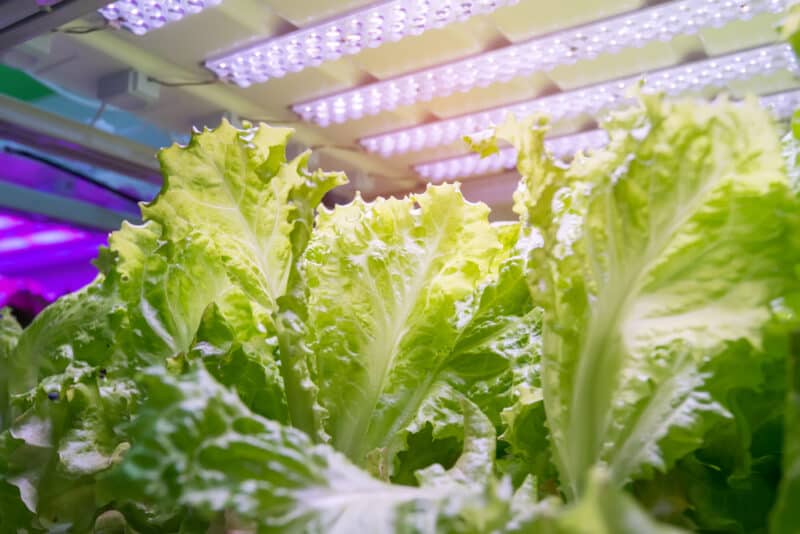
You may need to add extra light when you are growing plants indoors. You can do this by using fluorescent or incandescent lights, though it’s important to note that incandescent lights produce a lot of heat and aren’t the most efficient when it comes to using electricity.
When choosing artificial lights, be sure to consider the quality of light and wavelength in addition to how long you will be keeping the lights on during the day and night.
When you are selecting supplemental grow lights for your plants, make sure you pay attention to the brightness (intensity) of the lights as well as how long you will keep them on. Make sure you’ve selected full-spectrum lights, too, so your plants get the various wavelengths and colors they need to thrive.
Other Things to Keep In Mind
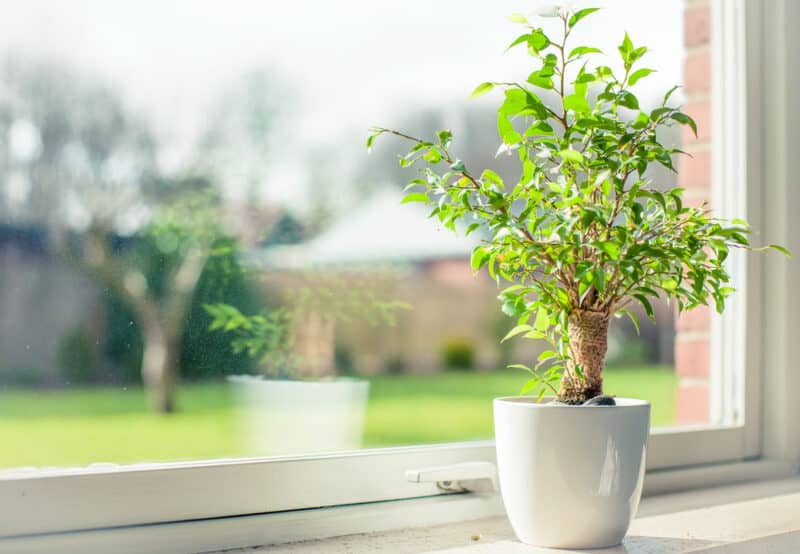
Three major factors impact plant growth and development: the intensity of light, the duration, and the spectrum.
However, there are lots of other factors to keep in mind, too. For example, temperature. The majority of plants can tolerate some temperature fluctuations, particularly those that might occur naturally between day and night.
When temperatures become way too hot or way too cold, particularly all of a sudden, is when you need to pay attention. These can cause plant stress and prevent it from growing as well as it could. Try to keep temperatures within the same 10-15° range at all times if you have control over the growing conditions (for example, if you are growing indoors).
Humidity is something to keep in mind, too. Indoors, it tends to be much less humid than it is outside. You can group plants and use a humidifier to increase indoor humidity.
Of course, all of these variables work together with light to help plants grow. Dial-in the lighting, and your plant growth is likely to respond positively. The result? Healthier, more productive plants!
